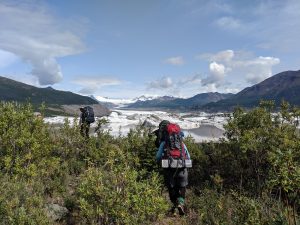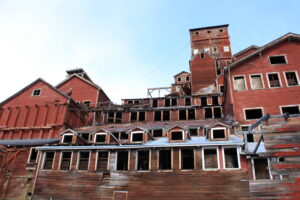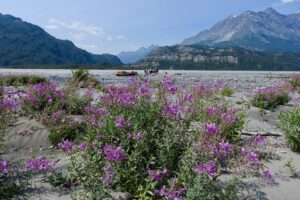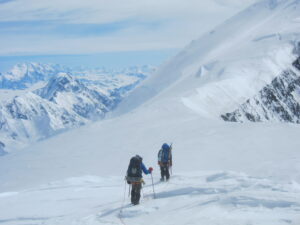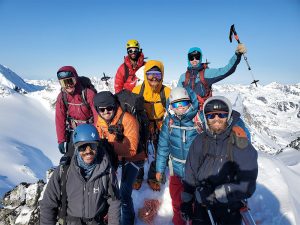By Ethan Moorhead, Guide
 So you’re buying your first backpacking stove, or picking which to use for an upcoming trip? With so many options on the market it can be tough to know what type to look for. This brief overview may help explain the differences and point you towards the proper tool to make your meals hot for years to come.
So you’re buying your first backpacking stove, or picking which to use for an upcoming trip? With so many options on the market it can be tough to know what type to look for. This brief overview may help explain the differences and point you towards the proper tool to make your meals hot for years to come.
Backpacking stoves can be divided into three basic types: Liquid fuel, canister, and quick-boil. Liquid fuel stoves attach to their fuel bottles via a fuel line that keeps the stove and fuel about 6″ apart. Canister stoves thread on to the top of their fuel canisters directly and the pot sits on top of the completed tower. Quick-boil stoves are a subset of the canisters but have a proprietary pot that will only match that model’s stove to increase efficiency. Each style has its own benefits and drawbacks, outlined below, and can be selected based on the trip you are planning.
Liquid Fuel stoves: Ex. MSR Whisperlite, Optimus Nova
Pros: Because the fuel source is separate from the heat sources, these stoves can be completely enclosed in a windscreen/heat shield which leads to faster boil times in inclement weather. Their low and wide stance makes them more stable with heavier pots and many models will burn multiple types of fuel (white gas can be hard to find in smaller towns and internationally). Service can often be done in the field with supplied maintenance kits. They perform well at altitude and in extreme temperatures and their fuel bottles are refillable.
Cons: This type is almost always heavier and bulkier and the options are more limited. They require time to prime and more steps to get them running. Starting prices are higher and they are prone to carbon buildup after prolonged use.
Canister stoves: Ex. MSR Pocket Rocket, Snow Peak Litemax
Pros: These stoves are now very popular so there are plenty of options starting at lower price points. They can be extremely small and light and are simple to use with no priming required.
Cons: Their tall, narrow design is much less stable, especially with larger pots. Although the stove is compact, the fuel canister is not; on longer trips the volume of the fuel may outweigh the size saving of the stove itself. They MAY NOT be enclosed from wind completely due to risk of the canister exploding nor can they handle extreme temperatures making them less applicable in poor weather. Their fuel bottles are non-refillable, generally, and are comparatively expensive.
Quick-Boil Stoves: Ex. MSR Reactor, JetBoil Flash
As a subset of canister stoves, these have almost all the same pros and cons. What makes them unique is their shockingly fast boil times. However, they are more expensive and bulkier than many other options making them mostly suitable in situations where rapid boiling of smaller quantities of water is the primary concern. They are also not suitable for actual cooking; no food should be placed in the pot, only water for boiling and adding to pouch meals.
So, keep these options in mind when you’re shopping for your first backpacking stove or packing for your next trip. Keep on adventuring!
